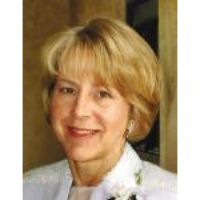
Journalist Fellowship Program
Kavli Institute for Theoretical Physics
Barbara Goss Levi earned a PhD in particle physics from Stanford University in 1971. For most of the past 30 years, she has written for Physics Today magazine, reporting on new discoveries at the frontiers of physics. After rising to senior editor, she was in charge of Physics Today's news section, "Search and Discovery". In January of 2003, she stepped down from that post and now serves as a contributing editor. Her stories cover the full range of topics in physics today, from atomic to astrophysics, from condensed matter to geophysics.
Because of Dr. Levi's interest in issues at the interface of physics and society, she became a consultant for the US Congress' Office of Technology Assessment, from the late 1970s to the Office's closure in 1995. From 1981 to 1987, Dr. Levi was a member of the research staff at Princeton University's Center for Energy and Environmental Studies. Her work there on arms control and the effects of nuclear weapons resulted in, among others, two articles in Scientific American.
Dr. Levi has been an active member of the American Physical Society (APS). She was the chair of the APS Forum of Physics and Society and co-edited a book on global warming produced under the Forum's auspices. She served on the APS Executive Board and is currently a member of its Panel on Public Affairs. She has served on the Governing Council of the Federation of American Scientists and on the steering committee of the physics section of the American Association for the Advancement of Science.
She is a fellow of both the APS and the American Association for the Advancement of Science.

Is it already over? The halls have grown quiet. The office doors are largely closed and silent. The blackboards are blank. And cookies remain on the tray long after the start of the afternoon coffee break.
Clearly, I've grown addicted to the fast pace and boisterous discussions that have echoed through the halls of KITP during the past three months. A striking impression I have gained is the intensity with which physicists pursue their discipline. They become completely consumed as they heatedly argue the fine points of physics with one another. One staff person told me she used to fear that the physicists would come to blows, but soon learned that the disputes concerned the ideas and not the individual. Another staff member observed that the discussions were the "experiments" by which the theorists "tested" their ideas.
I had always known that the physics community is an international one, but that point has been brought home to me in spades by my participation here. At any given gathering, there might be people from India, Japan, Spain, Germany, England, Austria, Denmark, and so forth. Despite the geographic separation, members of the condensed matter community know each other and engage in a lot of good-natured bantering. There's a relaxed and congenial atmosphere at most talks as physicists probe and question new techniques, approaches or results.
Physicists have clearly been eager to maximize the opportunity afforded by their common residence at KITP. They are frequently found in one another's offices or in small clusters around a blackboard. A chat over afternoon coffee in the common room is often the start of an hours-long session at the blackboard there.
As always, I have found physicists more than willing to take time to talk with me and to explain their ideas at my level. I got more out of such interviews than I did from the talks (except for Monday chalk talks and Wednesday's KITP Colloquia). At the beginning of the program, I tried to sit in on every talk but I soon found that I was getting little out of them. The speakers did not spend much time on the kind of overview I was seeking; most got very quickly got into complex mathematics and terminology for which I had no background.
While here, I have written two stories for Physics Today that deal with the topics of the conference: the observation of an excitonic condensate in a quantum Hall bilayer system and the demonstration that ultracold fermions can be used for atom interferometry. I am working on another story that will deal with recent evidence of charge and spin order in the cuprate materials. I've also been alerted to the formation of molecules made of one ultracold boson and one ultracold fermion; I'm waiting until the experimenters are able to make a measurement establishing the existence and properties of such a heteronuclear molecule.